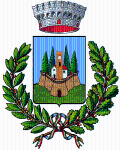Descrizione
L’oratorio di San Vito è menzionato dall’anno 715 nelle controversie diocesane fra Siena e Arezzo, nel 1210 il Cartulario della B.ga cita due volte San Vito, le sue genti e la chiesa. Alla metà del XIII sec. sono censite tra le 11 e le 17 persone soggette di imposta, all’ inizio del secolo successivo nella curia vi sono tre località, denominate Monile, Santo e Volpaia. Nel Vicariato del 1344 troviamo Sancto Vito Berardengo, lo stesso che nel 1366 sarà chiamato a compartecipare alla costruzione del Castello Nuovo e ad unirsi alla sua comunità nel 1367. Nel XVII secolo sono segnalati tre poderi, S.Vito di Sopra e San Vito di Sotto di proprietà del Sig. Campioni e uno S. Vito proprietà della chiesa di Corina e probabilmente ubicato di fronte all’edificio religioso. La chiesa di San Vito fu restaurata una prima volta nel XIII sec. e ne troviamo evidente traccia nelle murature, altre ricostruzioni risalgono al XIV e XV secolo, solo la finestra risale ad un’epoca moderna. Nelle immediate vicinanze della chiesa fu ritrovata la stipe votiva (semidistrutta) di un tempio del I° sec. a. C. , a distanza maggiore sono state verificate frequentazioni importanti di epoca romana.
English version:
The oratory of San Vito was mentioned in 715 in disputes between the diocese of Siena and Arezzo, and in 1210 the Berardenga Cartulary cites the people and church of San Vito twice. In the mid-13th century censuses showed between 11 and 17 people subject to taxation, and at the beginning of the next century the curia indicated three localities, called Monile, Santo and Volpaia. In the 1344 Vicariate we find mention of Sancto Vito Berardengo, which in 1366 was called upon to contribute to the construction of the Castello Nuovo and to join its community in 1367. In the 17th century, three farms were indicated, S.Vito di Sopra and San Vito di Sotto owned by Sig. Campioni, and another S. Vito owned by the church of Corina and probably located opposite the religious building. The church of San Vito underwent restoration for the first time in the 13th century, and we can find clear traces of that effort in the walls; other reconstructions date to the 14th and 15th centuries, but only the window is from the modern era. In the immediate area of the church, the semi-destroyed votive deposit of a 1st century a.C. temple was found, and slightly further away, signs of a significant Roman presence have been verified.
Modalità d'accesso
sempre aperta
Indirizzo
Punti di contatto
Ultimo aggiornamento: 4 marzo 2024, 12:47

